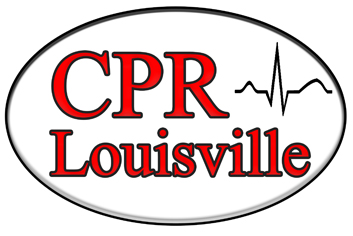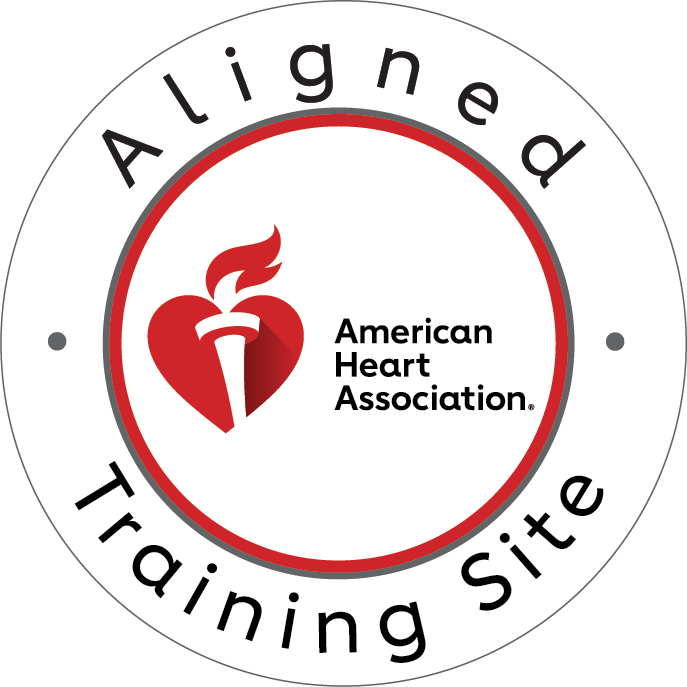Blog Articles | CPR Louisville
Welcome to CPR Louisville’s Blog. Here you will find articles on a large variety of health and disease-related topics. These articles are written by students currently in programs that include all healthcare providers, such as nursing, chiropractic, pre-med, dental, dental hygiene, therapists, etc. Each paper has the goal of giving a very general overview and written in a way that anyone without a medical background can easily understand it. We hope these papers can provide some good preliminary information for those interested in learning more about a given topic on a health condition. As always, make sure you consult with your doctor before making any health-related changes to the material that you have read.
So we hope you enjoy reading these papers. Thank you for visiting us.
Anybody that is not using a condom during any type of sex is at risk of getting a Sexually Transmitted Infection. The risk could be higher for people who have more than one partner, those who partners have other sex partners, and people who practice commercial sex. Drug abusers can also be at risk for getting transmitted diseases especially if they are sharing needles. Same-sex couples could be at risk if they don’t use condoms during sex, and make sure their partner is safe if they have other partners.
Finally, after all the tests were interpreted the conclusion was that the gram-positive bacteria was Bacillus subtilis, and the gram-negative bacteria was Proteus vulgaris. How did these results come to be? The first step was gram staining, which eliminated three gram-positive bacteria right away with rod-shaped results. The gram-negative bacteria was a different story since all the gram-negative bacteria we had to work with were all rid-shaped. Once down to two gram-positive bacteria tests were completed to eliminate one more. Glycerol, Maltose both came up negative but had a positive result on Casein. This was a problem and could have been contaminated while performing the test. Regardless two negative results lead to the belief that the gram-positive bacteria was Bacillus subtilis.Now on to the Gram-negative results, and since all of them are rod-shaped more tests were needed to eliminate possible bacteria. The tests are Urea, H2S, and Indole. The test for Indole came back positive, which eliminated two bacteria. Then the Urea test was positive, which eliminated one more. Finally, my H2S test came back positive, which left just one. No issues complicated the gram-negative conclusion, and the answer was Proteus vulgaris.
There are 33 known species that belong to the Staphylococcus genus. S. epidermidis is among the many bacteria that make up the normal skin flora. This particular bacterium was first differentiated from other forms of Staphylococcus in 1884 by Friedrich Julius Rosenbach (1). S. epidermidis does not usually is not usually pathogenic. The problem arises when the bacteria is moved from to surface to the interior of the body. S. epidermidis is a facultative anaerobe; it likes growing on plastic surfaces, and forms as biofilm when allowed to proliferate extensively. This presents a problem when a patient receives an intravascular catheter or a prosthesis of some kind, the plastic surfaces of each of these provide the perfect home inside the body for S. epidermidis. In fact, in the 1990s S. epidermidis accounted for 37.3% of nosocomial bloodstream infections (2).
The diagnosis of eczema is often a simple process. By going to a doctor or dermatologist and showing the flared-up areas of skin will result in a quick diagnosis. There are also spot tests where skin is exposed to an irritant to identify what causes the flare-up. While there are no cures, there are several methods of treatment that can ease the symptoms. One type of treatment is the use of ointments. The ointments that are often used to treat eczema contain hydrocortisone for low potency and corticosteroids for high potency. Often a dermatologist with give a list of irritants to avoid that are found in shampoos and body washes. These are common chemicals that are recommended to avoid, one is Cocamidopropyl betaine which is found in most body washes and has been known to cause allergic reactions. This is a chemical that can induce itching and inflammation. Avoid shampoos with sulfates such as Sodium Laureth Sulfate, this is the cause for dryness in the scalp and hair. Also, avoid scented lotions and perfumes as some contain alcohol which dries out skin fast. Most products on the market contain these chemicals because they are cheap, a dermatologist can recommend what products to use that are gentle on the skin.
This test consisted of stirring the bacterial growth into a tube of phenol red and urea to test for the presence of acid. After incubation the broth was still a yellow color, giving a negative result. This confirmed that Enterobacter aerogenes was a gram-negative bacterium. A Methyl Red test was also performed to confirm this answer. The bacterial growth was stirred into the MR-VP and protein broth in order to determine if acid could be produced as a result of glucose fermentation. After incubation, the broth was a yellow color; a negative result. This also confirmed that the unknown bacterium was Enterobacter aerogenes.
Schizophrenia is a neurological brain disease that currently affects roughly 1% of the population. Because this disorder is biochemical, medications such as antipsychotics are used to help eliminate delusions and hallucinations. There are two types of antipsychotics: typical and atypical. These drugs are categorized differently mostly by the time they were approved by the FDA but also for the side effects. These medications are not strictly used for the treatment of schizophrenia but are used to treat other mental disorders such as bipolar.
Staphylococcus aureus is a Gram-positive bacterium that is found almost everywhere, typically on the skin and in the nose of about 30% of individuals. It is an opportunistic pathogen and causes a wide range of infections from a simple infection involving swelling and redness to more serious infections such as MRSA or osteomyelitis (bone infection). It can not only be extremely pathogenic and fatal but resistant to antibiotics as well. S. aureus seems to always become resistant to any antibiotic we throw at it. First penicillin, then methicillin, and now some vancomycin-resistant cases are starting to appear which means soon we won’t have an antibiotic to treat a resistant strand of staph. Studies have been done by the CDC and NHSN about MRSA just these past few years and have shown that nosocomial (hospital-acquired, also seen as HA-MRSA) infections have reduced dramatically, almost 50%, but community-associated MRSA (CA-MRSA) has rapidly increased2. CA-MRSA is extremely more virulent than HA-MRSA and has been seen to spread more quickly than HA-MRSA.
Although psychotherapy and medications are most helpful when treating an anxiety disorder, there are also some lifestyle and home remedies that can be beneficial as well. Some of them consist of staying physically active, avoiding heavy alcohol consumption and other narcotics, and also decreasing caffeine and tobacco intake. Using relaxation methods, getting a sufficient amount of sleep, and maintaining a healthy diet are yet other examples. I know that this might not work for certain individuals but it never hurts to try. The best ways to manage your anxiety disorder are to know a lot about the disorder, stick to your treatment plan, take action to help this problem, involve your family for comfort, and join anxiety support groups to talk about your disorder with people that are going through the same thing as you. After all, they understand a lot better than someone who has never gone through this before.
Bacillus subtilis is a rod-shaped, gram positive bacterium. It is quite common in nature and has also been attributed as part of the human intestinal flora. This means that it is one of the “helpful” bacteria that aid our bodies. It is a common misconception that all bacteria are harmful, when in fact, we have billions, if not trillions living inside us (Swartzburg, 2009). One of the interesting features of Bacillus subtilis is that it is capable of forming endospores when its environment becomes hostile. What this refers to is generally seen as the organism creating an extremely protective layer to shield its genetic material until a more hospitable environment comes about (Swartzburg, 2009).
Gout is associated with the excessive consumption of rich foods, and it was previously known as “the disease of kings.” Most of the food we love to eat has high purity. Purines are natural chemical elements of DNA and RNA, and when the body breaks them down, they turn into uric acid. Some purines are found naturally in the body, but some foods are especially high in purine content and can skyrocket uric acid levels in the blood and cause gout. Some of the foods that can potentially trigger gout are red meat, oily fish such as sardines and anchovies, certain green vegetables including asparagus, peas and cauliflower, beans, and mushrooms. People don’t know they have gout until the pain is vital.
Bacillus cereus was the gram-positive bacterium that was found. Originally isolated in 1969 (Bacillus cereus), it is most well known for causing food poisoning. This bacterium lives in soil, so it is easy to see how it would end up in many foods. It has been found in plants, eggs, and even meats (Bacillus cereus). Because it can make endospores, just heating it may not kill every little bit of the bacterium. Then if the food is left at room temperature for a while before being consumed, like at a buffet or picnic, the endospore can come back to life and start multiplying. When consumed, B. cereus can cause nausea, vomiting, and diarrhea (Bacillus cereus). Aside from food poisoning, it is also an opportunistic pathogen that presents a problem, especially in hospitals, for immunocompromised and premature babies.
The Food and Drug Administration has been working on this issue with antibacterial soaps, and in 2010 they told the companies that sell this kind of product to prove to them that it is worth it to have it in the market and that it actually works and do not have any side effects. If they cannot prove that the product works, companies have to take the product off the market, which is what the FDA wants because of the data that they have collected. The article mentions that the deadline is in June 2014 to submit the data and the studies of the product.
Watch this Youtube video by CPR Louisville that show how 2 healthcare providers would perform CPR.
Watch this video hosted on Youtube where an American Heart Association instructor from CPR Louisville demonstrates how to save a choking infant.
Learn how to use an AED machine in this video created by a certified American Heart Association instructor.
Unknown #123 contained two different specimens of bacteria, one being a gram-positive bacteria and one being a gram-negative bacteria. The first unknown in #123 found to be a gram-negative bacteria, was identified as Pseudomonas aeruginosa. This identification was reached by only one biochemical test and close observation. A gram stain was done originally and found red rods identifying the bacteria as gram-negative. The streak plate that was originally done, showed a heavy green pigment, which is a main characteristic of Pseudomonas auruginosa. The next test performed was a Casein Test which showed a clear positive result. The only gram-negative bacteria that show a positive result on the Casein Test pseudomonas aeruginosa, therefore correctly confirming the unknown gram-negative bacteria.
Vitiligo affects every race; it also does not affect any one age group. However, it is more noticeable in people who have darker skin. It does not start in any one specific place, it could start everywhere. It could start at a person’s hands, feet, back, legs, arms, and even around the skin of someone’s eyes. Vitiligo does not really run in families, some people might get the disease but have to family history of the disease. While in other cases a parent might have passed on the disease to their children.
Since a cure for Parkinson’s disease has not yet been found, a doctor will often prescribe an amino acid called Levodopa (also referred to as L-dopa) that the brain turns into dopamine. The use of this amino acid can aid the person in moving more freely. There are also dopamine agonists, which are medications that act like dopamine and work in the same way as Levodopa. Some dopamine agonists that may be prescribed are Mirapex, Parlodel, Requip, Comtan, Tasmar, and Apokyn. Sometimes, surgery and deep brain stimulation can be helpful. Deep brain stimulation is when electrodes are implanted into the brain. Although deep brain stimulation can make symptoms less severe, it cannot stop symptoms or keep the disease from getting worse. Also, these surgeries are not the best option for everyone. Eating a healthy, well-balanced diet is helpful for people with Parkinson’s disease. They will want to eat foods that are high in vitamin D and calcium to assist with building bone strength.
Multiple sclerosis has many different symptoms and can vary from person to person as to what symptoms can appear during the beginning stages or later progression from the disease. Most or all symptoms will affect the nerve fibers of the body depending of their location of them. Symptoms of multiple sclerosis include numbness or weakness of limbs, partial or complete loss of vision or pain during eye movement, blurred or double vision, tingling pains around the body, shocking sensations with specific head movements, tremors or lack of coordination, slurred speech, fatigue, bladder control problems, and dizziness. In some cases of multiple sclerosis, heat sensitivity can be a problem. Increases in body temperature can worsen the already present symptoms. Along with multiple sclerosis being attuned to the diseased, some might experience symptom relapses in the beginning stages of the disease which can be followed by an absence of all symptoms or a remission period. In a few situations of having multiple sclerosis, conditions can remain stable and progression is limited after an attack.
Although many get diagnosed with one of the three thyroid diseases, there are treatments for each kind. For the first one, hyperthyroidism can be treated with medication so it can lower the production of the hormone. Additional treatment is to have radioactive treatment which is drinking a dose of the radioactive iodine. Another option that is considered is to have a part or all of it surgically removed. The second type which is a goiter can be treated with radioactive iodine and can also be surgically removed. Graves disease, also mentioned as goiter, needs to be addressed quickly because the later it is diagnosed, the more symptoms a person can experience, and can lead to cancer is some cases. The third type is hypothyroidism, and it can be treated with thyroid pills which give the thyroid the hormone it needs since it cannot produce enough of it on its own. There isn’t much you can do because the medication itself supplies the thyroid.
There are many causes of lung cancer, but smoking is the main one. Smokers aren’t the only ones affected by this either. Those exposed to secondhand smoke may also be diagnosed with lung cancer. Although smoking is a major cause, those who have never smoked in their lives can also get lung cancer. Smoking causes lung cancer by damaging the cells in the lungs. When cigarette smoke, which is full of carcinogens, is inhaled, it changes the tissues in the lung. When this first begins, the body will try to repair the damage. After increased, prolonged exposure, though, the body becomes unable to continue repairing the damaged cells and cancer develops. Besides smoking, other causes include exposure to radon gas, exposure to asbestos and other chemicals, and a family history of lung cancer.
Coronary artery disease flares up when involved in a stressful activity and this is when you can start to see the symptoms arise. When your arteries become narrowed they can’t supply enough oxygen/ blood to the heart. A person at this time might experience chest pain and may feel pressure or tightness in their chest. This feeling can go away minutes after stopping the stressful activity. However, in women, the pain can sometimes be sharp and be located in the abdomen, back or arm.
There are many things in our lives that can contribute to high blood pressure. These are things that everyone should be aware of and keep an eye on to ward off hypertension. Age is the main factor in high blood pressure. As we age, our blood pressure increases and we are more at risk. Family history is another factor. If your family has a history of high blood pressure it is really important to watch your blood pressure as you get older and get it checked regularly. Stress, being overweight and not being active, eating too much salt, using tobacco, and drinking alcohol excessively are all factors that will raise your blood pressure. These are things that you could actively work on to keep your blood pressure down.
There are multiple causes for ischemic strokes, the most common being emboli from blood clots that have formed due to atrial fibrillation. Atrial fibrillation essentially is an irregular heartbeat involving the top two chambers of the heart; blood clots develop in the atria because of the inadequate emptying of the chambers due to the arrhythmia, and the clot eventually exits the atrium to the left ventricle and then onto the major vessels that supply the body and brain. Besides forming in the heart, blood clots can also form in different parts of the body, like the legs, and upon traveling to the brain may lodge and cause a C.V.A.
There are two significant ways to treat brain aneurysms: clipping and coiling. The first treatment, “clipping” is performed by a neurosurgeon who will cut the skin on the head, make an incision through the skull and dissect through the brain to find the aneurysm and put a clip across it so no blood reaches it. This is a somewhat short procedure, but the recovery time can last months. The other treatment method is called endovascular coiling. A neurosurgeon will insert a catheter into a vessel at the hip or groin that will read the brain. Coils are then packed into the aneurysm to the point where it arises from the vessel, preventing blood flow from entering the aneurysm. Patients who use this procedure will usually go home the following day and start their normal activities shortly after.









